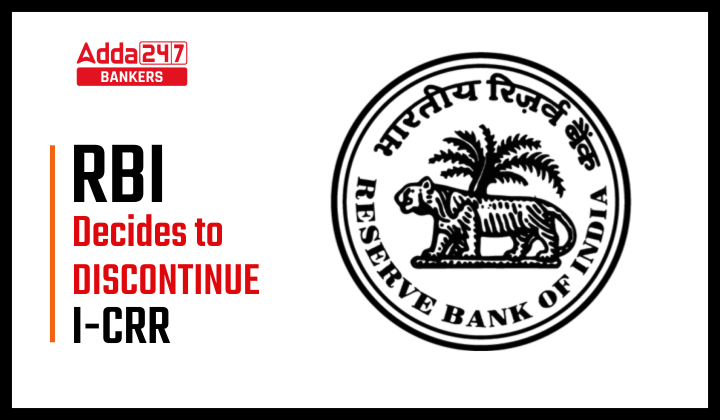The topics around rates and policy of RBI are always important from the perspective of the Banking Examination. As per the latest news from the Reserve Bank of India, the RBI has decided to discontinue I-CRR or Incremental Reserve Ratio. One of the well-known tools of monetary policy Cash Reserve Ratio must be well known to the candidates. The I-CRR is a similar instrument with a temporary nature first bought in 2016 to manage access to liquidity post-demonetisation in 2016. Here in this article, candidates can get an in-depth understanding of I-CRR and RBI’s decision to discontinue I-CRR.
Why I-CRR Was Needed In 2023?
The RBI introduced the I-CRR (Incremental Cash Reserve Ratio) as a temporary measure to absorb excess liquidity from the banking system. The reason for surplus liquidity was serval factors like, the reintroduction of Rs 2,000 banknotes into the banking system, the RBI’s transfer of surplus funds to the government, an uptick in government spending, and a rise in capital inflows. In the month of July, the RBI was absorbing liquidity at a daily rate of Rs 1.8 lakh crore.
Date of Introduction of I-CRR
The I-CRR was introduced on August 10, after a monetary policy review meeting the Governor of RBI, Shri Shaktikanta Das said that banks will have to maintain an I-CRR of 10 per cent on the increase in their net demand and time liabilities (NDTL) between May 19, 2023, and July 28, 2023. It came into effect from the fortnight starting August 12.
Impact That I- CRR Has Had
Here are the impacts that the I- CRR along with other measures has had on the liquidity.
- Banking system’s liquidity turned deficit for the first time in the current fiscal on August 21.
- This deficit was primarily caused by the RBI’s I-CRR mandate.
- Other factors contributing to the tight liquidity condition included outflows related to goods and services tax (GST).
- The central bank also sold dollars to curb the depreciation of the rupee.
- As a result, the liquidity, measured by the amount of money injected by the RBI into the system, was at Rs 23,644.43 crore on August 2.
What is CRR?
The Cash Reserve Ratio (CRR) is the minimum amount of the total deposits which banks have to maintain as cash reserve with the Reserve Bank of India.
| Related Articles |
| G20 Summit 2023 New Delhi, Theme, Schedule, Countries |
| AU TO G20 |





 GA Capsule for SBI Clerk Mains 2025, Dow...
GA Capsule for SBI Clerk Mains 2025, Dow...
 The Hindu Review October 2022: Download ...
The Hindu Review October 2022: Download ...
 Bank Exams 2025, Check Full List of Upco...
Bank Exams 2025, Check Full List of Upco...


